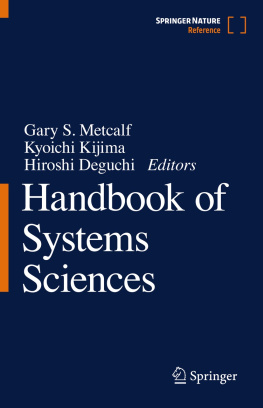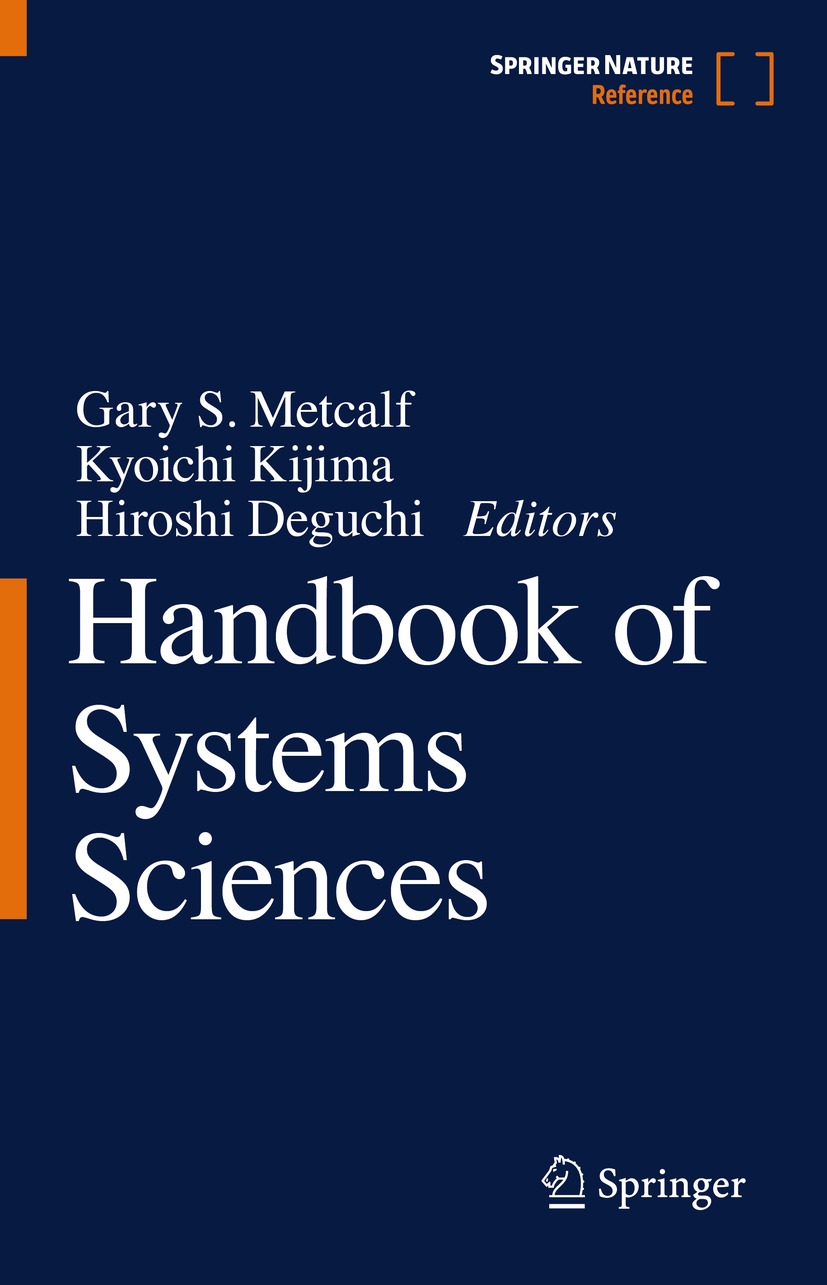Scope
The Handbook of System Science is not restricted to science in a traditional sense. The topics covered represent a broad spectrum of research activities related to systems, including systems thinking, systems theory, and systems practices. The scope of this handbook spans diverse intellectual research activities and studies which could be classified into three areas: philosophical foundations, scientific theories, and practical applications. Though it seems natural that any systemic research or study would span more than one area, it is helpful to clearly indicate how this handbook addresses those issues.
First, the handbook includes research and studies to develop, construct, and evolve theories, concepts, and models of systems. This relates not only to general systems theory (GST), but also cybernetics, and complexity theory, and underlying philosophical principles. According to Ludwig von Bertalanffy, the founding father of GST, systems philosophy attempts to capture the deeper reorientation or shift in paradigms caused by thinking in these terms.
Next, there are activities to describe, explain, and understand various phenomena and events that have been dealt with in the conventional academic fields from a systems viewpoint or systems framework. They are what Bertalanffy calls systems science (in a precise sense). Systems science is the use of systems theories in traditional disciplines, such as physics, biology, psychology, and sociology. This includes a search for isomorphisms which would connect the disciplines at higher theoretical levels (which is a part of the hope for a general system theory).
There is, on the one hand, a need to unify principles across the domains of science. On the other, there is a need to appreciate characteristics and phenomena that arise at some levels of organization (sometimes called emergent properties), which do not appear in more basic forms of organization. Some problems can be reduced to the most basic levels, but others can only be understood as parts of complex networks.
Thirdly, there is an area called system thinking, or a systems approach, which is applied to tackle and manage practical problems and events. Those have become common, almost generic terms, particularly in applied areas such as management consulting. Bertalanffy makes reference to a systems approach rather than systems thinking. What he calls systems technology is quite relevant to this area, since it is a way of addressing complexity, as he sees it arising in society through computerization and automation of many kinds, as well as the increasing amounts of data and concepts that need to be understood.
Purpose
The primary purpose of this handbook is to clearly describe the current state of systems science and its applications in terms of relevant theories, concepts, methods, and practice in the scope described above. Each chapter of this handbook attempts to distinguish what is unique about systems even when applied to traditional domains of knowledge or practice. It is intended as a field guide that indicates why, when, and how to use the materials and topics contained in the handbook for a general audience of students and researchers who have an interest but no necessary background in these fields.
Unique Features and Strength
This handbook takes a multifaceted view of systems research. However, our intention is not to produce a catalog of theories, concepts, methodologies, tools, practices, and so on. Neither is it to condense or restate information that has been written in other places. Our intention is to create a reference book which achieves the following:
The chapters contained in this handbook attempt to summarize basic concepts about systems and associate them with relevant and/or practical applications.
When we describe a theory of systems science, we also discuss how and why the theory is relevant to modeling of and/or practice in reality. The interrelationships between theory and practice are also illustrated when an applied research field in systems science is explained.
Many active researchers and practitioners in systems research circles, including members of the ISSS (International Society of the Systems Sciences) and INCOSE (The International Council on Systems Engineering), are included as authors. These contributions represent perspectives from North America, Europe, and Asia (especially Japan and China).
Structure of the Handbook
This handbook consists of 9 parts, comprised of 49 chapters, covering the three system research areas mentioned above. The figure below provides a holistic picture of the structure of the parts in the handbook. The terms in italics show research areas while those in bold indicate the part titles. The figure also shows the number of chapters included in each part. Note that these are only general categories for the parts and chapters. Some are more theoretical, some more applied, but there are many variations. Some chapters, for instance, specifically refer to philosophical concepts, while others mention changes in perspective more generally, and so on.









